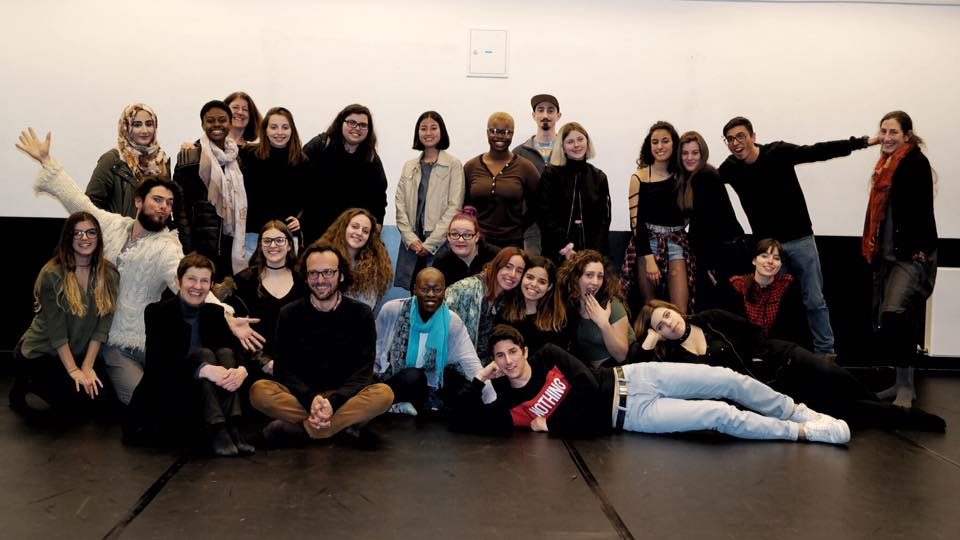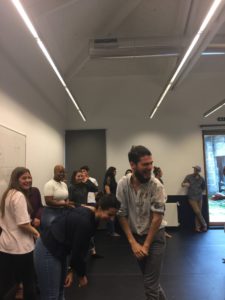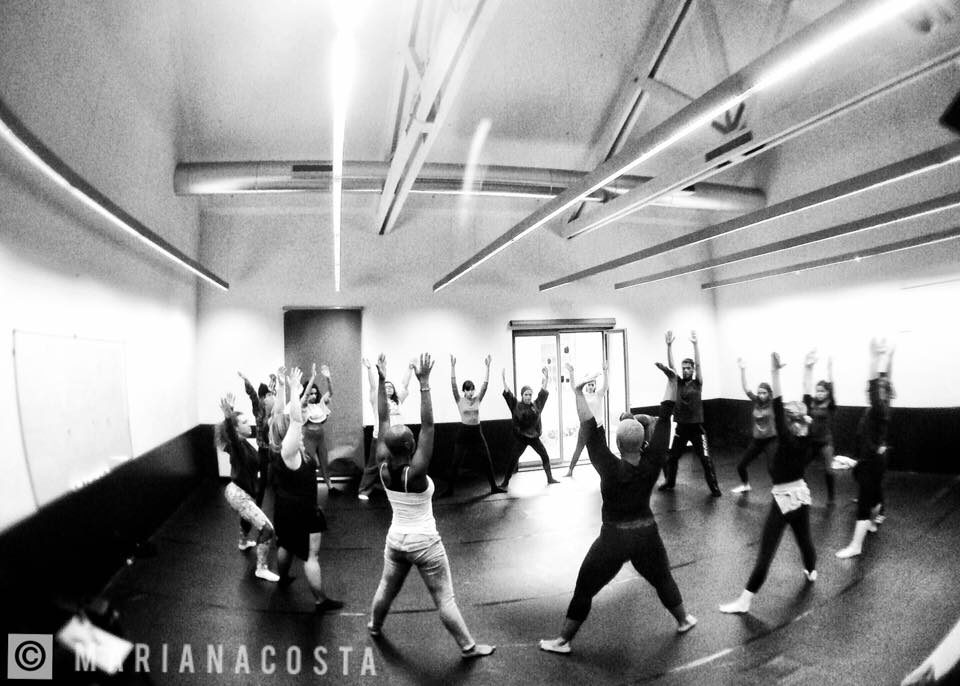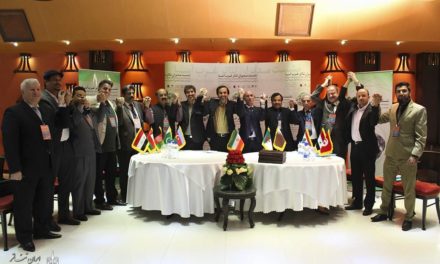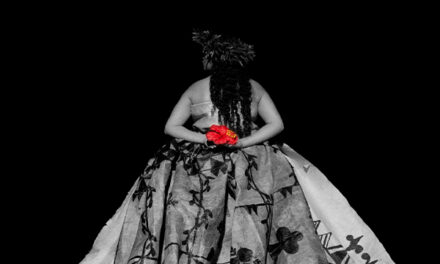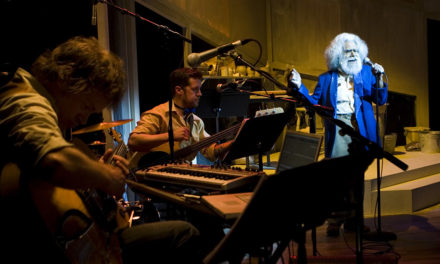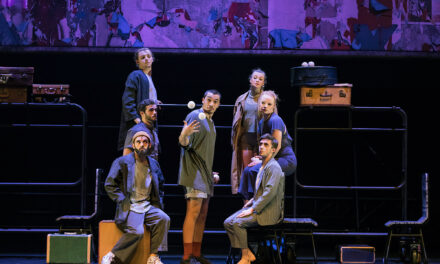Between March 2016 and March 2017, students and staff from the Universidade do Minho in Portugal and from Buffalo State University in the US have been collaborating on an international service-learning project around refugee issues. Lying behind this work was a concern to raise awareness about the difficulties faced by refugees in the countries to which they travel in terms of housing, employment, language and education. For students involved in this project this has been combined with a strong sense of the academic value of service learning programmes that equip university students with skills and competencies that can be used in creating and developing such projects with community partners.
After an initial phase based around e-mail exchanges that helped to define the parameters of the project, Joy Guarino and Ann Emo, teachers of Dance and Theatre Design respectively at Buffalo State, travelled to the northern Portuguese town of Guimarães for a week-long stay in January 2017. During this time, they met Fadi Skeiker and myself from the Theatre course teaching staff, the second-year Theatre students who would be involved in the project as well as those within the university who would be financing the project. They also met Isabel Baptista of “Guimarães Acolhe” (Guimarães welcomes) the association which deals with the day-to-day needs of Syrian refugees who arrive in Guimarães from camps in Italy and Greece or refugees who come to Guimarães after long journeys from Eritrea. This visit helped to identify the needs of the community partner and the ways in which students could create a common artistic project that would help that community partner in their work and raise awareness in the local community about refugee issues.
Previous to this visit, there had been attempts by staff at the Universidade do Minho to involve refugees directly in theatre projects, although these turned out to be unsuccessful. Many refugees were recent arrivals in Portugal or did not see themselves staying in the country. Many had children to care for or needed to look for jobs. A young woman from Eritrea who came on a regular basis simply stopped coming after a while. This was either because she was no longer interested in participating or she felt uncomfortable alone. Either way, this illustrates the difficulties in working on theatre projects with refugees when there is no existing social or leisure association to which they belong that could act as a basis for such work. In Buffalo, on the other hand, service-learning programmes have a longer history and students had already worked with refugee populations in local schools.
After the January visit, a Facebook page was established for students to communicate with each other before the final phase of the project. Students at Buffalo also researched Portugal as a country before a second week-long visit to Guimarães in March 2017. Nine students accompanied Joy Guarino and Ann Emo on this visit, but the Facebook page enabled students who were not able to come to Portugal to accompany the project from a distance. The students who travelled came from various subject areas from Dance to Media courses but the Portuguese students were all Theatre students. During the week, mixed groups of Buffalo and Minho students worked on two video projects, a performance and an installation, all of which were student-led. The programme for the week also included staff and student workshops and a pot-luck dinner where students interacted more informally and taught each other dances. On the final day, the artistic projects were shown to a local audience at the municipal library in Guimarães where refugees come for Portuguese classes. The mixed audience included refugees, university staff, local council employees as well as curious individuals. The projects were presented as works in progress. This was particularly the case for the two video projects, which had demanded extensive editing and thus needed more time after this initial showing. Afterwards, students spoke about their work, communicating with the audience about the social importance of such projects and their own feelings about refugee issues.
Several conclusions might be drawn from the first stage of this project. It was an ambitious project which combined international collaboration between students in two very different countries with a service-learning project developed with a community partner around how the arts can act as advocates for refugee issues. These different layers might need to be more clearly separated and the outcomes for each of them made more specific in order to ensure that each of these areas receives equal attention in the future. During the week, the international collaboration part of the project was perhaps most evident but it may be that in the immediate future the more academic and artistic components of the project become more prominent as students process what they have learnt during the week. For the students themselves, a feedback session suggested they had all learnt form the experience and that they had become more aware of the skills that they have or have developed over the course of the project. They also enjoyed the workshops and social activities. The fact that they did not interact directly with refugees, however, may not only have made the creation of the artistic projects more challenging but also meant that the focus of the artistic work was more on the response of Portugal and the Portuguese as a host nation welcoming the refugees rather than on the experiences and needs of the refugees themselves. Some work might also need to be done in the future on educating those unfamiliar with artistic processes as there were some comments from university professors in other disciplines after the performances wondering why a whole week’s work had only resulted in projects that were three or four minutes long. None of this should take away from the fact that highly-motivated students, staff and the refugees themselves greatly benefited from this innovative project as did the institutions involved.
This post was written by the author in their personal capacity.The opinions expressed in this article are the author’s own and do not reflect the view of The Theatre Times, their staff or collaborators.
This post was written by Francesca Rayner.
The views expressed here belong to the author and do not necessarily reflect our views and opinions.

